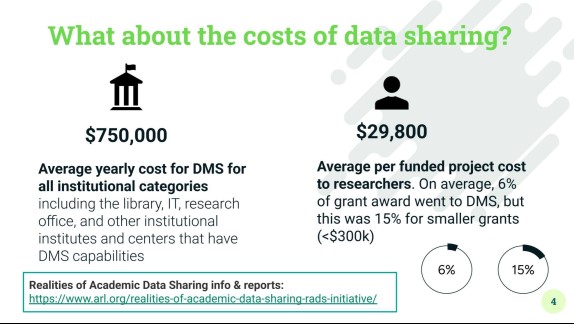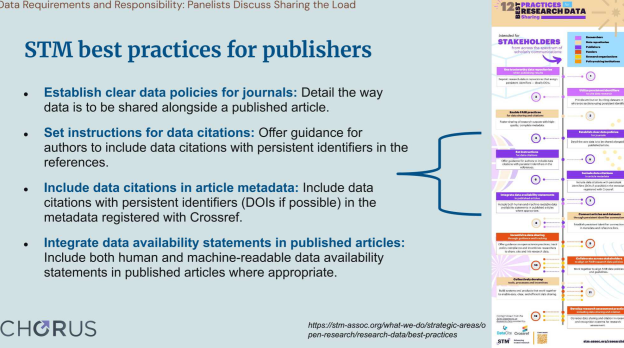MODERATOR:
Shari Leventhal
American Society of Nephrology
SPEAKERS:
Shannon Farrell
University of Minnesota
Jenny Peng
Oxford University Press
Duncan MacRae
Wolters Kluwer
Emma Shumyeko
The National Academy of Sciences
REPORTER:
Jennifer Parresol
Sharing and standardizing data provides many benefits to research and readers. With this comes challenges within workflows and legal and ethical consideration.
Standardizing data across the board leads to better discoverability, along with enhancing open access compliance, improving metadata quality, and connecting stakeholders. To move toward standardization of various constituents, journals, authors, and editors need to work together to improve adherence to data standards and requirements. This may include cross-industries collaboration to harmonize data sharing workflows, as current workflows between journals and repositories are often at odds, inhibiting curation.
With data sharing and standardizing come challenges in not only preparing data for sharing, but in the time it may take, which could require significant efforts. Cost can also come into play. The average yearly cost for data management systems (DMS) across institutions is $750,000, whereas the average cost per funded project is $29,800, with smaller grants being significantly less (Figure 1).

Funding is just one of the things to consider for data sharing and standardizing for both authors and publishers. Legal and ethical compliances, which may include sensitive personal data that could be subject to regulations, would need to be examined. Data integrity ensures that shared datasets are complete and accurate. It is important to have trusted safe repositories for authors to upload their data.
How do we get closer to moving toward standardizing? With some best practices, outlined below (Figure 2):
- Data Policies. Establish clear data policies for journals.
- Data Citations. Include data citations with persistent identifiers in article metadata.
- Data Availability Statements. Integrate human and machine-readable data availability statements in published articles.
- Data and Materials Sharing. Adherence to policies requiring public sharing of data, materials, and associated protocols.
- Enforcement. Verifying data statements and usability.
- Policy Clarity. Avoiding vague or inconsistently applied mandates.
- Resource Constraints. Equitable access, especially for researchers in the Global South.
- Educational Barriers. Awareness is crucial for compliance.
- Data and Materials Sharing. Adherence to policies requiring public sharing of data, materials, and associated protocols.
- Data Citation. Research datasets must be cited in references as a condition for publication.

In conclusion, standardizing data practices is essential for enhancing discoverability, open access compliance, metadata quality, and stakeholder connectivity. Achieving this requires collaborative efforts across various industries to harmonize data sharing workflows, addressing the current misalignment between journals and repositories that inhibits effective curation.
